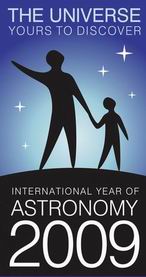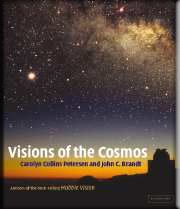 |
 The SpaceWriter's Ramblings |
 |
||
|
|
|
|
||
|
Anything and everything about science, especially astronomy and the cosmos. NOTE: This blog has migrated to a new address. Please update your favorites link accordingly.Visit my web site at Posting times are Powered by
|
5.29.2007 Void RidersWe are riding on the edge of a huge void in space, hurtling along at 600,000 miles per hour. Yes, it's true. We're moving along with the expansion of the universe AND with the coalescence of galaxies along filaments, in clusters at places where the filaments intersect. Yet, as we go about our daily lives, we're largely (if not completely) unaware of the ride we're taking through space and time as part of the Milky Way Galaxy. Yet, our motion tracks with the continuing evolution of the universe. Did that get your attention? It's a compelling story, and one that astronomer Brent Tully is telling in his latest research into the motions of galaxies in our neighborhood of the universe. In the past, our distance measurements to other galaxies could give us some very broad information about our galaxy's motion through space. In addition, other measurements of the Cosmic Microwave Background Radiation tell about some aspects of our galaxy's motion. But, there's always been a part of our motion that was unexplained—until now. Tully and a team of colleagues have done extremely precise measurements of distances to galaxies around us. Those measurements tell a great story of motion and action of galaxies through time and helped them finger a largely unexplored component of space as the culprit: the Local Void. This is a gap in space that is 50 megaparsecs across. (A megaparsec is about 3,260,000 light-years, and a light-year is the distance that light travels in a year.)  The distribution of galaxies in the region around the Milky Way (in galactic coordinates). Each little dot represents a galaxy of typically 100 billion stars. The colors indicate the relative motions of galaxies with accurately measured distances, with shades of gree and blue indicating motions toward us, and shades of yellow to red indicating motions away from us. (For more information, see the IFA press release. Concentrations of matter (like the filaments and clusters) are aggregates of matter that is pulled together. Concentrations of matter have gravity; they PULL on things. The Local Void, on the other hand, is empty. It seems to PUSH on things, including our galaxy. Tully explains it as the absence of a pull. If an object is surrounded by matter in all directions, except for one empty sector, then the absence of a pull from that sector is actually the same as a push. And, it can have a large effect on our region of space, in effect turning us into void riders moving along the edge of the Local Void. It's quite fascinating that we (all of us in the Milky Way Galaxy) should live on the edge of such a huge gap of nothingness; and, we ride along not really feeling our motion across the depths of space and time. Labels: the Local Void, universal expansion posted by CCP on 5/29/2007 09:13:00 PM | * |

Earth Hour! Do it for the Planet!
Blog RollPlanetarium-relatedLoch Ness ProductionsPurveyors of fine planetarium shows, music, and services. INTENSELY Good Space Music from a master in the genre! My cool astronomy cause: ScienceThe sites below belong to space and astronomy enthusiasts. I make every effort to check them and make sure they are still appropriate. However, I am not responsible for their content, nor do I endorse any of it by simply linking to them. As with all Web surfing, please exercise caution. Adot's Notblog A fellow traveler blogger and astronomy enthusiast! Astronomy Blog An astronomy blog pondering the big questions Astronomy Cast Astronomy Podcasting from Pamela Gay BadAstronomy.com Bad astronomy discussed and debunked along with fun stuff about really good astronomy! Chris Lintott's Universe Musings from an Oxford Astronomer. Cosmic Variance Random Samplings from a Universe of Ideas. Dave P's Astronomy blog Observational Astronomy and other TidBits European Southern Observatory Fine Ground-based astronomy images. Gemini Observatory Fine astronomy in infrared and visible wavelengths. Griffith Observatory's page. I wrote their exhibits! Observing The Sky Nightly Observation Reports from dedicated skygazers. The Official String Theory Web Site. Time to feed your mind! Pharyngula Evolution, development, and random biological ejaculations from a godless liberal. Cast off your blinders and come on in! Science Made Cool A compendium of discoveries, inventions and commentary. Slacker Astronomy Astronomy with a Slacker Twist. Space Telescope Science Institute The best from Hubble Space Telescope The Eternal Golden Braid Astronomy, Space Science, and Science Fiction Commentary. The Inoculated Mind Bills Itself as a weekly science mindcast. Thought-provoking, honest. Truth. UniqueThe Hairy Museum of Natural History
|




